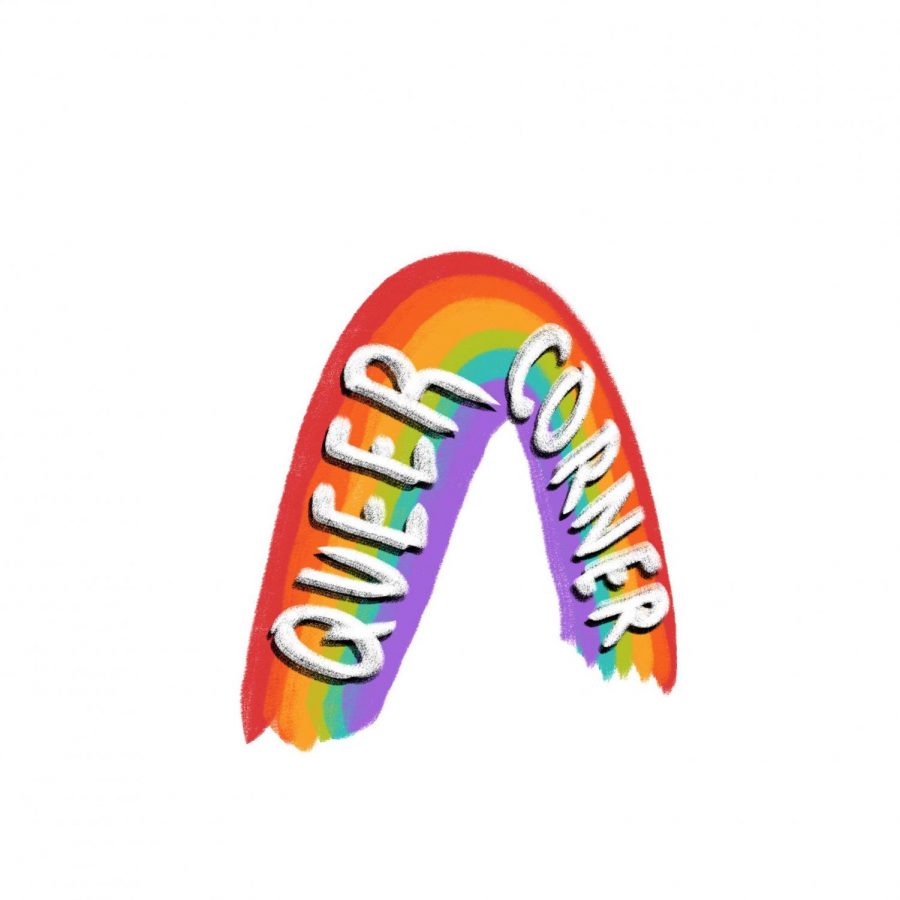The Queer Corner | For the love of lavender: Colorful queer resistance
The Queer Corner is a biweekly blog exploring LGBTQ+ community and culture.
February 25, 2022
The lavender latte — a drink that swept through the queer community, almost like a status symbol. It’s the sort of drink you order on a summer day at your local coffee shop to play out your most romantic cottagecore fantasies. It’s a drink that shows you’re someone cool. Someone who probably carries canvas tote bags and listens to not just Mitski, but The Japanese House, too. That is to say — really cool.
But the lavender latte isn’t simply a trend. It’s a movement representative of the larger history between lavender and the queer community. If you’ve taken an AP English course, you’re probably well aware that color can hold deeper meaning. Gatsby’s green light is more than a funky lamp, after all. Outside of literature, one’s choice of color can say a lot about a person, especially if that person happens to live in the Victorian era. Sometimes, a color can even act as a code.
Victorians loved rules. That’s kind of their whole thing. They loved rules so much that they invented unspoken social codes for just about everything — even flowers. After the turn of the century, people largely rejected Victorian rules, and by the 1920s, people began to experiment with, well, most things. They didn’t quite forget the Victorians, though. Instead, they changed the rules. Even the precious flower code. Notably, in the 1920s, a bouquet of lavender gifted from one woman to another meant just one thing — she’s interested.
So, why lavender?
Like so many of my favorite things, it all started with Sappho. Besides being a truly phenomenal poet, most people know Sappho of Lesbos for her ties to women who love women. Her name coined two of the most popular terms for queer women, after all.
Sappho’s love for purple flowers shines throughout her writing. Her only complete poem, “The Ode to Aphrodite,” paints her lover in shades of violet, and because she was one of the most popular lesbian poets of all time, the queer community formed a small connection to all things purple.
Years later, back with the Victorians, a man by the name of Oscar Wilde made quite a splash in the cultural scene. Wilde’s beloved work in the arts as a playwright and novelist was disrupted by his notorious celebrity trial on the topic of his homosexuality. Before his imprisonment, he often wrote about his “purple hours” with his male lovers, and because he, like Sappho, was one of the only high-profile gay individuals, lavender solidified its status as a queer color.
Then came the Lavender Scare. The end of the 1940s propelled America out of the fires of war and into, well, the freezer of war. 1950’s Cold War America thrived on milkshakes, poodle skirts and, of course, rampant paranoia over communism. But the war on communism wasn’t just about fighting the USSR, it was about purging the United States of any threats to normative American values. So the Red Scare turned purple with a new target on queerness.
McCarthy era paranoia proposed that being gay was a threat to national security, so President Eisenhower signed executive order 10450 firing around 5000 gay men and women from their government jobs in 1953. Besides the massive job loss, the executive order also officially classified homosexuality as a mental disorder and a “sexual perversion.” And because of purple’s association with the queer community, lavender became a derogatory mark on queer identities. It was a truly terrible time to be gay.
The Lavender Scare dominated American views surrounding the queer community. Homophobia became not just about hate, but about real and tangible fear. Because queerness was now a fireable offense, siding with the LGBTQ+ community could cause someone to lose everything. Just like the Red Scare policed communism, the Lavender Scare shrouded the queer community in distrust and disgust. To make matters worse, gay spaces like bars and clubs saw an uptick in police interest and patrons of those spaces were treated as enemies to the American public.
Thankfully, the ‘50s didn’t last forever. Later in the groovy 1970s, the second wave feminist movement found that it was not immune to lavender propaganda. Feminist writer Betty Friedan went as far as to call lesbians in feminism the “lavender menace,” and I bet she regrets choosing such a cool turn of phrase. After her statement, queer liberation groups within the feminist movement started to reclaim lavender. Most notably, the aptly-named group, the Lavender Menace, worked throughout the 1970s to include lesbian voices in the mainstream feminist movement.
The effects of the war on lavender continue to stifle gender and sexual freedom in modern America. While we have made great progress since the 1950s, we haven’t made it out of the woods yet. At times it feels like we’re walking directly into new and worse metaphorical woods. The history of the Lavender Scare sounds a lot like our current reality of invasions abroad and advocacy for homophobic laws. Just this week, we’ve seen echoes of Cold War fears stretch all the way from the borders of Ukraine to lawmakers in Texas.
But where there’s oppression, there’s resistance. The queer community has been combating hatred with lavender for over a century and we’re not stopping anytime soon. To me, the lavender latte is more than a drink. It’s a symbol of the queer community’s pursuit of liberation in the face of hatred. It’s a reminder that the fight isn’t over. And maybe we can win it. One lavender latte at a time.
Rachel writes about queer culture, the queer community and navigating life beyond the binary. Talk to them at [email protected].








